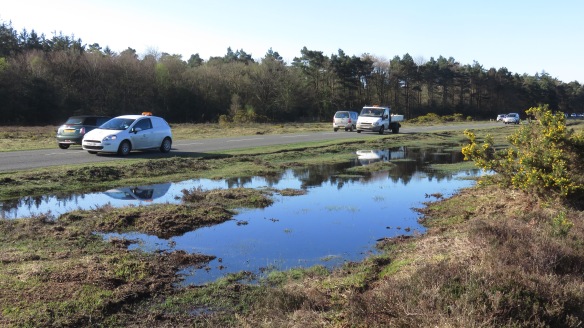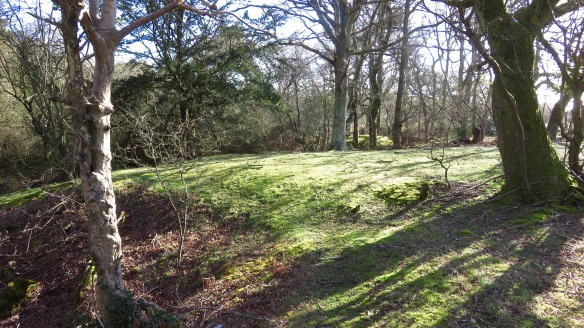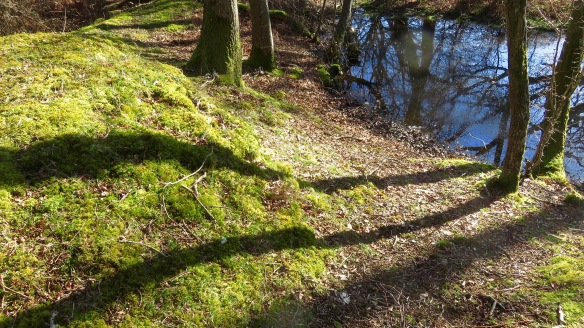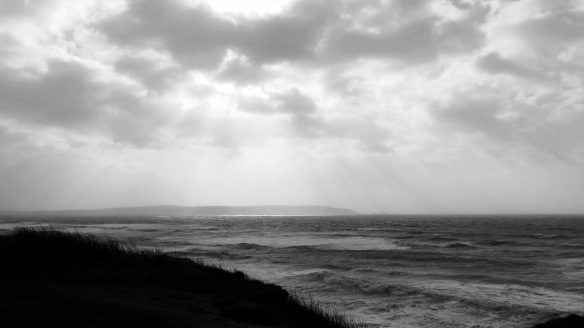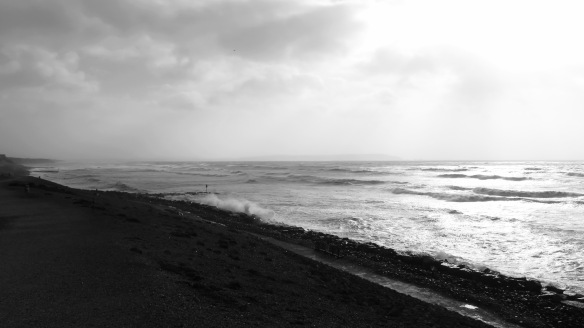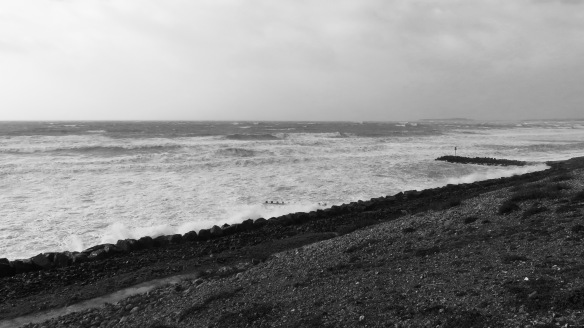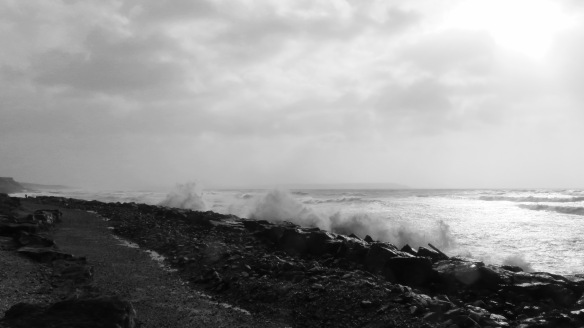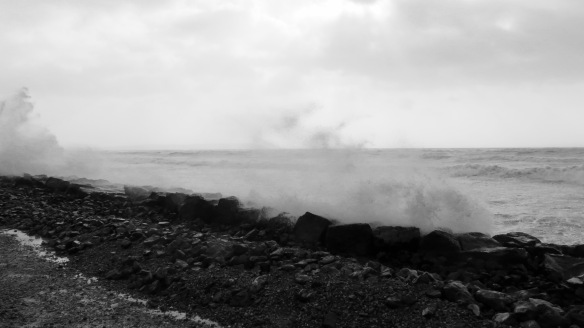On another day of unrelenting fine drizzle Jackie and I deposited the next carload of garden refuse into the local dump now termed the Efford Recycling Centre.
Potholes: Roads in England and Wales at ‘breaking point’
- Published15 hours ago
- commentsComments
Share
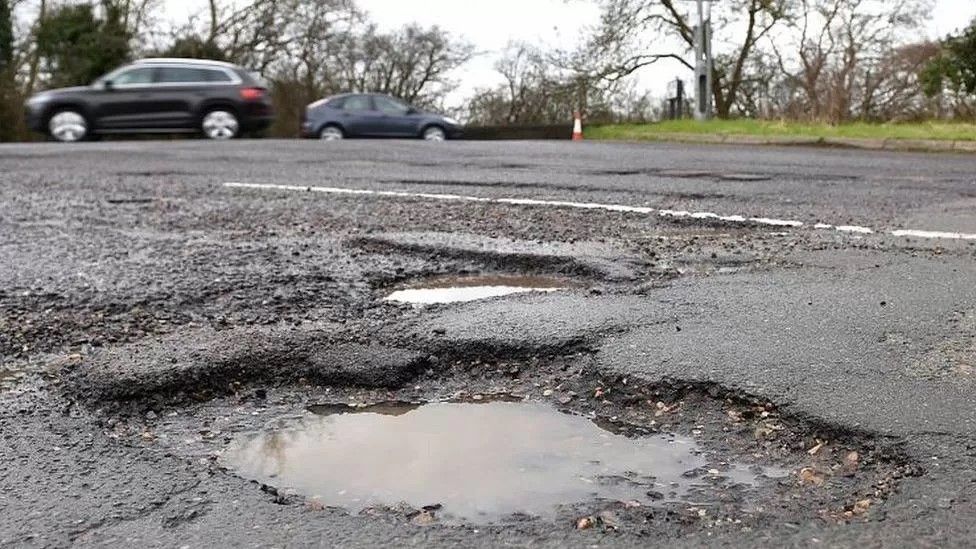
By Elizabeth Joyce and PA Media
BBC News
Roads in England and Wales are at “breaking point” due to potholes, with repairs at an eight-year high, according to a new report.
The Asphalt Industry Alliance (AIA) said councils were expected to fix two million potholes in the current financial year.
That is up 43% on the previous year and the highest annual total since 2015-16.
Ministers highlighted their pledge to provide £8.3bn of extra funding over 11 years for road improvements in England.
The AIA’s annual report found that 47% of local road miles were rated as being in a good condition, with 36% adequate and 17% poor.
The survey also found that average highway maintenance budgets increased by 2.3% in the 2023-24 financial year compared with the previous 12 months.
But the impact of rising costs due to inflation meant local authorities “effectively experienced a real-terms cut”.

Meanwhile, the amount needed to fix the backlog of local road repairs has reached a record £16.3bn, up 16% from £14bn a year ago.
AIA chairman Rick Green said: “Local authorities have a bit more money to spend this year but the impact of rising costs due to inflation means they have actually been able to do less with it.
“Couple this with the effects of the extreme weather we are increasingly facing, and the result is that the rate at which local roads are suffering is accelerating towards breaking point.”
- Floating rubber ducks added to flooded pothole
- Thousands join community potholes campaign
- Mystery artist highlights ‘very big hole’
Depending on their size, potholes can cause significant damage to vehicles and pose a danger motorists, cyclists and pedestrians.
Although small potholes rarely cause major accidents, if a vehicle hits a lot of them over time, it can lead to damage to the tyres, suspension and steering system.
In Daventry, Northamptonshire, signs have appeared from an apparently fed-up driver welcoming people to “Pot Hole City” and “Pot Holy Island”.
While on the Isle of Man, a woman has planted daffodils in potholes, hoping the “guerrilla gardening” will hammer home the problem.
In October 2023, the government announced it would provide the £8.3bn of extra funding for local road improvements.
This was part of the Network North strategy to use money saved by scrapping the planned extension of HS2 north of Birmingham.
Mr Green said: “There’s still a mountain to climb when it comes to fixing our local roads.
“While it’s great that English local authorities should be getting more money from the government through its Network North funding, it’s clearly not going to be enough to halt the decline.”
AA president Edmund King added: “Our breakdown data shows that 2023 was the worst year for potholes for five years.
“Arguably the road network is a local council’s biggest asset, but not enough planned investment and repairs are being made to make streets safer and smoother for drivers and those on two wheels.”
A Department for Transport spokesperson said the £8.3bn spending pledge was evidence the government was “taking decisive action to resurface roads and fix potholes”.
They added: “In addition, we have made £150m available for local authorities right now meaning funding for most authorities has increased by almost a third compared to last year, with a further £150m to follow in the coming financial year.”
The above is a current item from BBC News.
My regular readers will be aware of the number of hazardous holes we now negotiate daily.
Here is a small selection each no more than a short distance from our home – only those where it was possible for Jackie safely to stop and let me out. Where the edges of the tarmac are nibbled away it becomes hazardous for drivers to pass each other in opposing directions when one will need to crash a wheel over a crater of varying depths – our road surface waters have subsided somewhat at the moment but sometimes they have covered the holes making them invisible. Our local does its best to patch roads that really need resurfacing. Gravelled repairs soon wash out onto the tarmac.
A friend of ours recently drove the fifth car that damaged a wheel at the same spot in less than an hour.
While I was focussed firmly on potholes, Jackie photographed fleeting deer disappearing into the woodland flanking Holmsley Passage, and raindrops dripping from thorns.
Becky and our Grandfamily returned from their trip to Scotland yesterday evening and Ian joined us later so we were a full household able to enjoy Jackie’s wholesome chicken and leak pie; roast potatoes; crunchy carrots; firm cauliflower and broccoli, and meaty gravy. The Culinary Queen drank more of the Sauvignon Blanc, Ian drank Hoegaarden and I drank more of La P’tite Pierre.




























